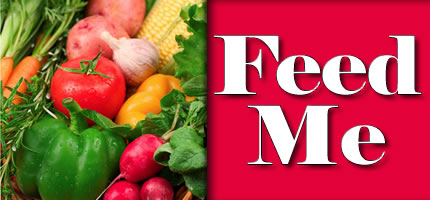
Fuel. It’s a hot topic right now. From automobiles to airplanes, factories to farms, everything needs fuel to function efficiently. And, nowhere is that more true than with your own body.
Recent studies have revealed that not only does a healthy diet lead to increased energy and stamina, it improves immunity to disease, reduces aches and pains, boosts mental function, slows the aging process, contributes to emotional stability, and can even improve your looks!
How ironic that in this age of unprecedented information about diet and nutrition, our popular diet is worse than ever! Recently, I visited a zoo with my children. We had fun watching the caretakers feed the animals. I was amazed at the striking difference between what the animals were eating, and the diet of the people who were visiting. Without exception, the animals were fed fruits, vegetables, nuts, whole grains, fish, and fresh water. The visitors were eating candy, hot dogs, cookies, and more candy — plus gallons of soda. I noticed a boy who looked about 11 years old, sitting on a bench. He was so large that he had difficulty getting up. In his lap, he cradled a monster-sized soda (it had to be a gallon or more) with two straws (for quicker delivery, I guess). I realize, of course, that there are health conditions what can cause obesity which are beyond our control. But, I couldn’t help but think that here was a young man who just didn’t know any better.
We are a society that is constantly eating, yet slowly starving to death. Our bodies, after all, are complex machines that cannot run efficiently without the right fuel. They crave nutrition. Too often we “fill up” our bodies without really “feeding” them. Many have excuses for not eating as they should. Here are the top 4 myths about healthy eating:
Myth 1: It’s all too confusing or experts contradict one another. Fact: Experts are in surprising agreement about the basic elements of a healthy diet. One thing that contributes to this perception of confusion is the news media, which reports interesting or unusual articles or clinical studies, but often fails to educate us on basic, widely accepted principles of nutrition.
Myth 2: Healthy food tastes bad. Fact: There are thousands of delicious foods that are part of a healthy diet. Enjoy the diverse assortment of flavor, color, and smell of healthy foods. Part of our perception of taste is what we are used to. If we try different foods and adopt a positive attitude about the wealth of delicious choices available, we will grow to love food that is good for us.
Myth 3: I’m young and healthy. I don’t have to worry about eating right until I am old and sick. Fact: The way you eat today affects how you look and feel today. In addition, the cumulative effect of our eating habits also helps determine how we will look and feel tomorrow–and how soon you will be “old and sick.” We all know people in their 40s and 50s who are chronically tired, constantly getting sick, mentally dull, and who look old for their age. We also know people in their 70s and 80s, who are sharp and well and energetic. Eating habits learned in youth tend to stay with us for a lifetime. Now is the time to develop positive patterns for ourselves and our families.
Myth 4: Eating healthy takes too much time and money. Fact: Healthy eating can be just as fast and convenient as unhealthy eating. It’s simply a matter of making educated choices. Nature has provided hundreds of delicious “fast foods” that are quick, convenient and inexpensive. Enjoy an apple, savor a salad, nibble on nuts, have some halibut, or gobble grapes.
I like to think of healthy eating as a Way of Life rather than a diet or short-term quick-fix. If you would like some helpful advice to help you get on the right track, click here to view my popular “Way of Life” tips that can help you make good choices, lose weight, and feel better.
Why not decide now to fuel and feed your body so that you can make the rest of your life the best of your life.


wow
I think I’ve used all of those excuses before. I know what I need to eat — and NOT eat — it’s just finding the motivation to stick with it.